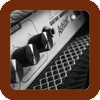



 |
|
 |
|
 |
|
 |
|
|
||||||
| |||||
|
|
||||||||||||||||||||||||||||||||||||||||||
|
I Require More Edgy FunkHeadquartered in Brooklyn, the neophyte Daptone Records proclaims that it “will undoubtedly be the source of today’s heaviest and most soulful funk music.” Founded by Gabriel Roth and Neal Sugarman, Daptone Records seeks to engage in a musical genre that has evolved into a chimera. Funk combines elements of soul, blues, gospel, jazz, and rock music (the list could be expanded even further), and exists as a category that can claim everything from horrendous jam bands with nonsensical names and legions of bourgeois pothead followers, to the Go-Go genius of Chuck Brown.
Pure Cane Sugar is the third full-length album, and the first on Daptone Records, of the Sugarman Three and Co., the previously mentioned Neil Sugarman’s deceivingly titled quartet. I do not deny that the Sugarman 3 and various guests have produced an enjoyable album, which I would not hesitate to play in an attempt to inspire people to dance at a party or some other social event. Stylistically, the album has much merit. My caveat in writing this review, however, is that Pure Cane Sugar lacks an emotional power or uniqueness that goes beyond mere enjoyment.
Pure Cane Sugar is at its best when the band’s individual elements are allowed to demonstrate their singularity, and the group’s sound does not succumb to a claustrophobic gathering of instruments. Pure Cane Sugar is frustrating at times, as you pick up a good drum solo or a distinctive guitar riff, only to lose it to a collective bleating that sounds identical to what you just heard on the last track. Perhaps minimalist funk is an oxymoron. For instance, on the first track, “Funky So-And-So,” I wished that drummer Rudy Albin would have been allowed to stretch his solo parts – the horns and organ coming back in seemed to be prosaic in light of Albin’s distinguishing contribution. The tracks “Pure Cane” and “Country Girl” suffer from the same over-saturation, to the point where I found myself wishing for a moment of stark dissonance.
Tracks that stand out on Pure Cane Sugar involve vocals or an immediately discernable departure from the standard funk format. On “Take it As it Come,” guest vocalist Charles Bradley sounds like James Brown, grunting and sweating his way across the stage. The vocals are strong and have a sexy, bad-ass quality to them, with Bradley repeating that he’s “got one foot out the door / ’bout to have one more / what you gonna do babe?” Naomi Davis accomplishes a similar feat of vocal imposition on “Promised Land,” extolling her listeners to climb “higher and higher.” The religious bent of Davis’s lyrics also seem to create a more tangible link between funk and its gospel origins, giving the track an earthy, natural feel on an album that seems a bit over-produced at times.
On “Modern Jive,” Bernard Purdie, with his impressive and eclectic resume (his personal website boasts the superlative, “the world’s most recorded drummer,” listing studio work with, among others, Miles Davis, Hall & Oates, and Cat Stevens), joins the Sugarman 3, providing a downbeat tempo that stands out and gives the song a more seedy, lounge feel; a musical barbiturate. “La Culebra” shines on the album as well, with its Latin intonations and the dreamy flute accompaniment that Sugarman provides.
After having listened to Pure Cane Sugar a couple times, I threw on ESG’s A South Bronx Story, to compare and contrast. Something about ESG’s more simplistic production, coupled with the fact their music had a contemporaneous cultural and social potency, made it seem far more important to listen to. I then thought of Curtis Mayfield, and the misdirected, yet highly political funk of Superfly, and how the album was groundbreaking in its sound and implied creation. I come to my conclusion. Pure Cane Sugar sounds good, but it operates in a vacuum of sorts, music that is pretty, but fundamentally anachronistic and relevant in aesthetic terms only. By Andy Urban
|
|||||||||||||||||||||||||||||||||||||||||
| |||||